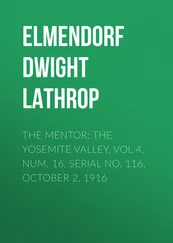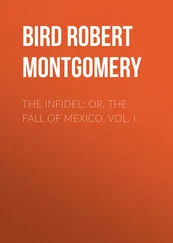Anne Blunt - A Pilgrimage to Nejd, the Cradle of the Arab Race. Vol. 2 [of 2]
Здесь есть возможность читать онлайн «Anne Blunt - A Pilgrimage to Nejd, the Cradle of the Arab Race. Vol. 2 [of 2]» — ознакомительный отрывок электронной книги совершенно бесплатно, а после прочтения отрывка купить полную версию. В некоторых случаях можно слушать аудио, скачать через торрент в формате fb2 и присутствует краткое содержание. ISBN: , Жанр: foreign_antique, foreign_prose, Путешествия и география, на английском языке. Описание произведения, (предисловие) а так же отзывы посетителей доступны на портале библиотеки ЛибКат.
- Название:A Pilgrimage to Nejd, the Cradle of the Arab Race. Vol. 2 [of 2]
- Автор:
- Жанр:
- Год:неизвестен
- ISBN:http://www.gutenberg.org/ebooks/42217
- Рейтинг книги:4 / 5. Голосов: 1
-
Избранное:Добавить в избранное
- Отзывы:
-
Ваша оценка:
- 80
- 1
- 2
- 3
- 4
- 5
A Pilgrimage to Nejd, the Cradle of the Arab Race. Vol. 2 [of 2]: краткое содержание, описание и аннотация
Предлагаем к чтению аннотацию, описание, краткое содержание или предисловие (зависит от того, что написал сам автор книги «A Pilgrimage to Nejd, the Cradle of the Arab Race. Vol. 2 [of 2]»). Если вы не нашли необходимую информацию о книге — напишите в комментариях, мы постараемся отыскать её.
A Pilgrimage to Nejd, the Cradle of the Arab Race. Vol. 2 [of 2] — читать онлайн ознакомительный отрывок
Ниже представлен текст книги, разбитый по страницам. Система сохранения места последней прочитанной страницы, позволяет с удобством читать онлайн бесплатно книгу «A Pilgrimage to Nejd, the Cradle of the Arab Race. Vol. 2 [of 2]», без необходимости каждый раз заново искать на чём Вы остановились. Поставьте закладку, и сможете в любой момент перейти на страницу, на которой закончили чтение.
Интервал:
Закладка:
The berak, Ibn Rashid’s standard, is a square of purple silk with a device and motto in white in the centre, and a green border. It is carried by a servant on a tall dromedary, and is usually partly furled on the march. Ambar, the negro emir el-Haj, generally accompanies this group. He has a little white mare led by a slave which follows him, and which we have not yet seen him ride.
After the berak comes the mass of pilgrims, mounted sometimes two on one camel, sometimes with a couple of boxes on each side, the household furniture. The camels are the property of Bedouins, mostly Shammar, but many of them Dafir, Sherârat, or Howeysin. They follow their animals on foot, and are at perpetual wrangle with the pilgrims, although, if they come to blows, Ibn Rashid’s police mounted on dromedaries interfere, deciding the quarrel in a summary manner.
A Persian riding on a camel is the most ridiculous sight in the world. He insists on sitting astride, and seems absolutely unable to learn the ways and habits of the creature he rides; and he talks to it with his falsetto voice in a language no Arabian camel could possibly understand. The jokes cut on the Persians by the Arabs never cease from morning till night. The better class of pilgrims, and of course all the women except the very poor, travel in mahmals or litters – panniers, of which a camel carries two – covered over like a tradesman’s van with blue or red canvas. One or two persons possess tahteravans , a more expensive kind of conveyance, which requires two mules or two camels, one before and one behind, to carry it. In either of these litters the traveller can squat or even lie down and sleep. The camels chosen for the mahmals are strong and even-paced; and some of these double panniers are fitted up with a certain care and elegance, and the luxuries of Persian rugs and hangings. A confidential driver leads the camel, and servants sometimes walk beside it. One of the pilgrims keeps a man to march in front with his narghileh, which he smokes through a very long tube sitting in the pannier above. There are a few horses, perhaps about half a dozen. One, a white Kehilan Harkan, was bought the other day by a rich pilgrim from a Shammar Bedouin of the escort. This horse seems to be thoroughbred as far as can be judged from his head, tail, and pasterns; the rest of him is hidden by a huge pallan , or pack-saddle, with trappings, in which his new owner rides him. I have seen no others worth mentioning.
The whole of this procession defiled before us as we sat perched on the Tell es Sayliyeh just above their heads.
We have made some new acquaintances, Hejazis from Medina, who came to our tent to-day and sat down in a friendly way to drink coffee with us. The Hejazi, though accounted pure Arabs, are almost as black as negroes, and have mean squat features, very unlike those of the Shammar and other pure races we have seen. They are also wanting in dignity, and have a sort of Gascon reputation in this part of Arabia. These were extremely outspoken people. The chief man among them, one Saleh ibn Benji, is keeper of the grand mosque at Medina, and is now travelling to collect alms in Persia for the shrine.
He told us that although quite willing to make friends with us here and drink our coffee, he could not advise us to go to Medina. Not but what Englishmen as Englishmen were in good repute there; but it was against their rule to allow any except Mussulmans inside the town. If we came as Mussulmans it would be all very well, but as Nasrani it would not do. He himself would be the first to try and compass our deaths. They had found a Jew in Medina last year and executed him; and the people were very angry because the Sultan had sent a Frank engineer to survey the district, and had given out that he was a Moslem. The rule only applied to the two holy cities, Mecca and Medina, not to the rest of the country. The Mussulman subjects of the Queen who came from India were (even though Shias) always well received; so should we be if we conformed to Islam. The Persians, though tolerated by the Hejazi, were disliked as Persians as well as heretics, and often got beaten in Medina. He (Saleh) was going to collect money from them, as they were fools enough to give it him, but he did not care for their company. He would sooner travel with us. We might all go together on this tour through Persia. One thing he could not understand about the English Government, and that was, what earthly interest they had in interfering with the slave trade. We said it was to prevent cruelty. But there was no cruelty in it, he insisted. “Who ever saw a negro ill-treated?” he asked. We could not say that we had ever done so in Arabia; and, indeed, it is notorious that with the Arabs the slaves are like spoiled children rather than servants. We had to explain that in other countries slaves were badly used; but as Saleh remained unconvinced, we could only wind up with a general remark, that this interference with the slave trade was a “shoghl hukm,” a matter concerning the Government, and no affair of ours. He seemed pretty well informed of what was going on in the world, having heard of the Russian war, though not the full circumstances of its termination; and of the cession of Cyprus, as to which he remarked, that the English Queen has been given Kubros as a bakshish by the Sultan. His last words were, “Plain speaking is best. I am your friend here; but, remember, not in Medina, on account of religion.”
CHAPTER XIV
“Come, Myrrha, let us go on to the Euphrates.” – Byron.
We go in search of adventures – Taybetism – An hyæna hunt – How to cook locusts – Hawking – The reservoirs of Zobeydeh – Tales, and legends – A coup de théâtre – Mohammed composes a kasid.
February 6. – We are tired of loitering with the Haj, and besides, do not care to see more of Ibn Rashid, who is expected to-day. It is always a good rule not to outstay your welcome, and to go when you have once said good-bye. So, finding no indication of a move in the pilgrim camp this morning, we decided on marching without them. We have not gone far; indeed, from the high ground where we are camped we can see the smoke of the camp rising up at the edge of the plain. There is capital pasture here; and we have a fine wide prospect to the south and west; Jebel Jildiyeh being now due south of us, and Jebel Aja west by south, Haïl perhaps forty miles off; to the north the Nefûd, and behind us to the east from the ridge above our camp, we can look over a subbkha six or seven miles distant, with the oasis of Bekaa or Taybetism (happy be its name) round its shores. The place had always been called Bekaa, we are told, till a few years ago, when the name was thought unlucky, and changed, though I cannot quite understand why, for the word means a place where water can collect.
We flew our falcon to-day, and, after one or two disappointments, it caught us a hare. The wadys are full of hares, but the dogs cannot see them in the high bushes, and this was the only one started in the open. We have encamped early, and are enjoying the solitude. The moon will be full to-night; and it is provoking to think how much of its light has been wasted by delay. The moon is of little use for travelling after it is full.
February 7. – Though we did not move our camp to-day, we had a long ride, and got as far as the village of Taybetism, which is worth seeing. It is a very curious place, resembling Jobba as far as situation goes. Indeed, it seems probable that most of the towns of Nejd have in common this feature, that they are placed in hollows towards which the water drains, as it is in such positions that wells can be dug without much labour. Like Jobba, Taybetism has a subbkha, but the latter is altogether a more important oasis, for the palm-gardens reach nearly round the lake, and though not quite continuous, they must have an extent of four or five miles. The houses seem to be scattered in groups all along this length, and there is no special town. 4 4 It was to Taybetism that Abdallah ibn Saoud fled ten years ago when he was driven by his brother out of Aared, and from it that he sent that treacherous message to Midhat Pasha at Bagdad which brought the Turks into Hasa and broke up the Wahhabi Empire.
The geology of the district is most interesting. At the edge of the subbkha the sandstone rocks form strange fantastic cliffs, none more than fifty feet high, but most fanciful in form. Some, shaped like mushrooms, show that the subbkha must at one time have been an important lake, instead of the dry semblance of a lake it now is. We measured the largest of these, and found it was forty feet in length by twenty-five in width at top, with a stalk of only five feet, the whole mass resting on a high pedestal. Other rocks looked as though they had been suddenly cooled while boiling and red hot, with the bubbles petrified as they stood. There were broad sheets of rose-coloured stone like strawberry cream with more cream poured into it and not yet mixed, streaked pink and white. Here and there, there were patches of Nefûd sand with the green Nefûd adr growing on them, and clusters of wild palms and tamarisks with a pool or two of bitter water. The subbkha, although quite dry, looked like a lake, so perfect was the mirage, of clear blue water without a ripple, reflecting the palms and houses on the opposite shore. We went round to some of these, and found beautiful gardens and well-to-do farms with patches of green barley growing outside. These were watered from wells about forty-five feet deep, good water, which the people drew for our mares to drink. We passed, but did not go into a large square kasr belonging to Ibn Rashid, where a dozen or so of dervishes from the Haj were loafing about. They asked us for news – whether the Emir had come, and whether the Haj was still waiting. These were most of them not Persian dervishes, though Shias, but from Bagdad and Meshhed Ali, people of Arab race.
Интервал:
Закладка:
Похожие книги на «A Pilgrimage to Nejd, the Cradle of the Arab Race. Vol. 2 [of 2]»
Представляем Вашему вниманию похожие книги на «A Pilgrimage to Nejd, the Cradle of the Arab Race. Vol. 2 [of 2]» списком для выбора. Мы отобрали схожую по названию и смыслу литературу в надежде предоставить читателям больше вариантов отыскать новые, интересные, ещё непрочитанные произведения.
Обсуждение, отзывы о книге «A Pilgrimage to Nejd, the Cradle of the Arab Race. Vol. 2 [of 2]» и просто собственные мнения читателей. Оставьте ваши комментарии, напишите, что Вы думаете о произведении, его смысле или главных героях. Укажите что конкретно понравилось, а что нет, и почему Вы так считаете.
![Anne Blunt A Pilgrimage to Nejd, the Cradle of the Arab Race. Vol. 2 [of 2] обложка книги](/books/750183/anne-blunt-a-pilgrimage-to-nejd-the-cradle-of-the-cover.webp)











